From the
Sub-Tropical Fruit Club of Qld Inc.
by Gerry McMahon, Senior Technical Officer, DPIFM Darwin

Pruning Pitaya
(Dragon Fruit)
Sourced from: STFC Newsletter June, July 2006
Pruning is required to maintain the shape and size of the plants as
they can quickly become unruly and top heavy. Pruning also enables
access to the plant which assists harvesting. Care should be taken to
dispose of the cuttings as they have the potential to become weeds.
Step 1 - Before: Pruning should occur after the last harvest in
May-June in Queensland
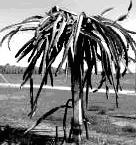
Step 2 - Clean main stem: Branches growing up the main stem must be
removed.
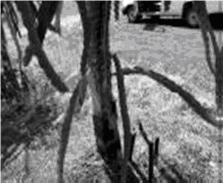
Step 3 - Remove old growth: Selectively remove
the older branches from underneath.
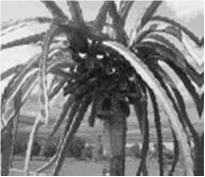
Step 4 - Cut back clean: Cut branches back to the original stem.
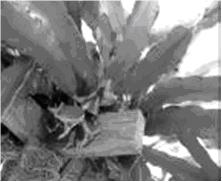
Step 5 - Set canopy size: Keep at the most 50
main branches leaving
only 1-2 sub-branches per main branch.

Step 6 - After: Pruning is needed to maintain
fruit production and size
ready for September-October flowering.
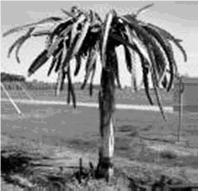
Varieties:
There are no varieties in the proper sense, but there are many clones
which can differ in the stem type, colour, fruit shape, skin thickness
and scale expression. There are however two different species, H. undatus which
has white flesh and H.
polyrhizus which has red flesh. There are also several
other fruiting cactus genera that are called 'pitaya' one of these is Selenicereus megalanthus
which has smaller fruit with yellow skin, white flesh and clusters of
spines on the fruit that brush off when ripe.
DEPARTMENT OF PRIMARY INDUSTRY, FISHERIES AND MINES, Crops, Forestry
and Horticulture Division, GPO Box 3000 Darwin NT 0801. Web: www.nt.gov.au/dpifm
Disclaimer:
While all reasonable efforts have been made to ensure that the
information contained in this publication is correct, the information
covered is subject to change. The Northern Territory Government does
not assume and hereby disclaims any express or implied liability
whatsoever to any party for any loss or damage caused by errors or
omissions, whether these errors or omissions result from negligence,
accident or any other cause.
Back
to
Pitaya
Page
|
|






